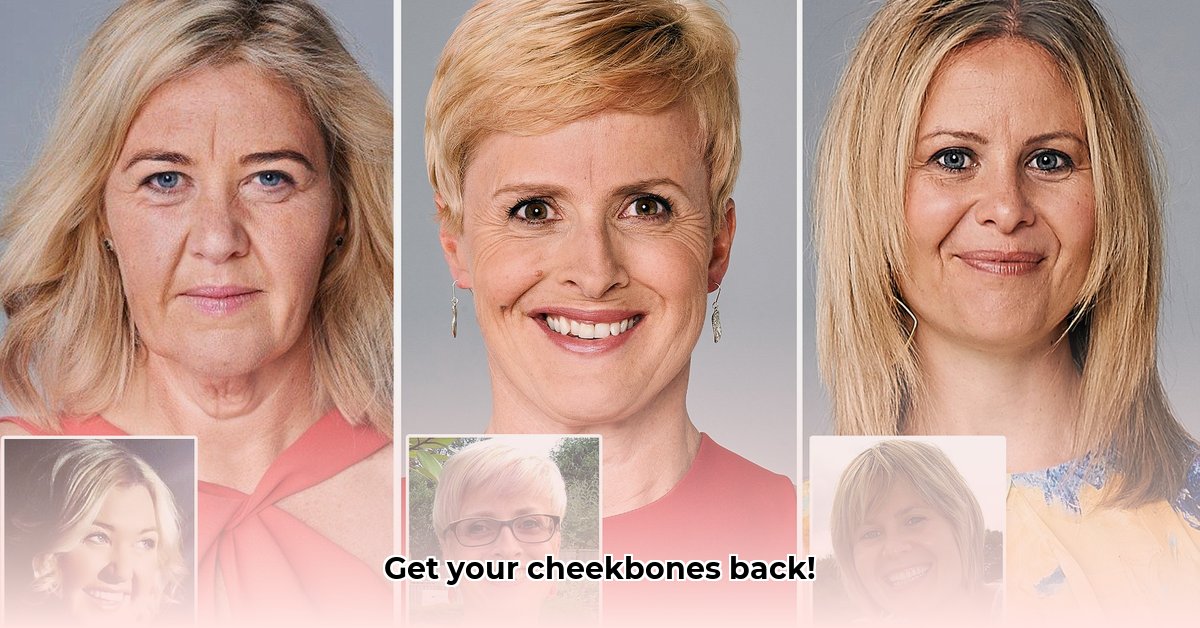
Losing weight is a significant achievement, but sometimes, the changes to your face can be unexpected. Sunken cheeks after weight loss are a common concern, leaving many feeling self-conscious about their appearance. Fortunately, several effective treatments can restore a fuller, more youthful look. This guide compares three popular options – dermal fillers, Sculptra, and fat grafting – to help you make an informed decision.
Understanding Weight Loss Sunken Cheeks
Significant weight loss often leads to a reduction in facial fat, resulting in a thinner, sometimes hollow, appearance in the cheeks. This is a natural consequence of weight loss and affects many individuals. However, if this change impacts your self-confidence, various cosmetic procedures can help restore volume and a more youthful facial contour.
Treatment Options: A Comparative Guide
The ideal treatment depends on individual factors such as budget, desired longevity of results, and comfort level with the procedure's invasiveness. Let's delve into the specifics of each option:
1. Dermal Fillers: Immediate Cheek Augmentation
How it Works: Dermal fillers, such as Juvéderm Voluma, are injectable gels that instantly add volume to the cheeks, filling the areas depleted by fat loss. They provide a quick, noticeable improvement.
Pros:
- Immediate results, visible plumpness immediately after the procedure.
- Relatively short procedure time, often a single session.
- Low risk of complications when administered by an experienced professional.
Cons:
- Temporary results, typically lasting 6-24 months, requiring repeat treatments.
- Cost can range significantly, from several hundred to over a thousand dollars per session.
Cost Range: $500 - $2000+ per treatment.
Ideal Candidate: Individuals seeking immediate, visible results with minimal downtime and who are prepared for maintenance treatments.
Recovery Time: Minimal to none; you can usually return to normal activities immediately.
2. Sculptra Aesthetic: Gradual Volume Restoration
How it Works: Sculptra Aesthetic stimulates your body's natural collagen production. This gradually adds volume over several months, resulting in a more subtle, natural-looking enhancement. It's a longer-term solution compared to fillers.
Pros:
- Longer-lasting results, generally lasting up to two years.
- More natural-looking results due to stimulation of the body's own collagen production.
Cons:
- Gradual results, requiring patience as the full effect develops over time.
- Can be more expensive than fillers, potentially requiring multiple treatment sessions.
- Mild side effects such as redness or swelling are possible, but usually temporary.
Cost Range: Similar to higher-end fillers or potentially higher due to multiple sessions.
Ideal Candidate: Individuals seeking a longer-lasting, natural-looking enhancement and willing to wait for the full effect to develop.
Recovery Time: Minimal downtime; minor bruising or swelling may resolve quickly.
3. Fat Grafting: Permanent Cheek Augmentation
How it Works: Fat grafting involves harvesting fat from another area of the body (e.g., abdomen, thighs) and injecting it into the cheeks to restore volume. This is a more involved procedure.
Pros:
- Potential for long-lasting or even permanent results, using the patient's own tissue.
- Very natural-looking results when performed skillfully.
Cons:
- More invasive procedure compared to fillers or Sculptra, requiring a longer recovery period.
- Higher risk of complications, such as infection or asymmetry, if not performed correctly.
- Significantly more expensive than other options.
Cost Range: Significantly higher than fillers or Sculptra.
Ideal Candidate: Individuals seeking a long-term solution and comfortable with a more involved procedure; requires sufficient donor fat.
Recovery Time: Several days to a few weeks of recovery, with potential swelling lasting longer.
Choosing the Right Treatment: A Summary Table
The following table provides a concise comparison of the three treatments to assist in your decision-making process:
| Feature | Hyaluronic Acid Fillers | Sculptra | Fat Grafting |
|---|---|---|---|
| Cost | Moderate | Moderate to High | High |
| Longevity | Temporary (6-24 months) | Up to 2 years | Potentially Permanent |
| Invasiveness | Minimal | Minimal | Moderate |
| Recovery Time | Minimal | Minimal | Several days to weeks |
| Natural Look | Good | Excellent | Excellent |
The Crucial Role of Consultation
This information is for educational purposes only and does not constitute medical advice. A consultation with a board-certified dermatologist or plastic surgeon is essential. They can assess your individual needs, discuss potential risks and benefits, and guide you towards the best treatment option for your specific circumstances. A thorough evaluation will also determine if you have adequate donor fat for fat grafting. Remember, the ultimate goal is to find a solution that restores your confidence and improves your overall well-being.